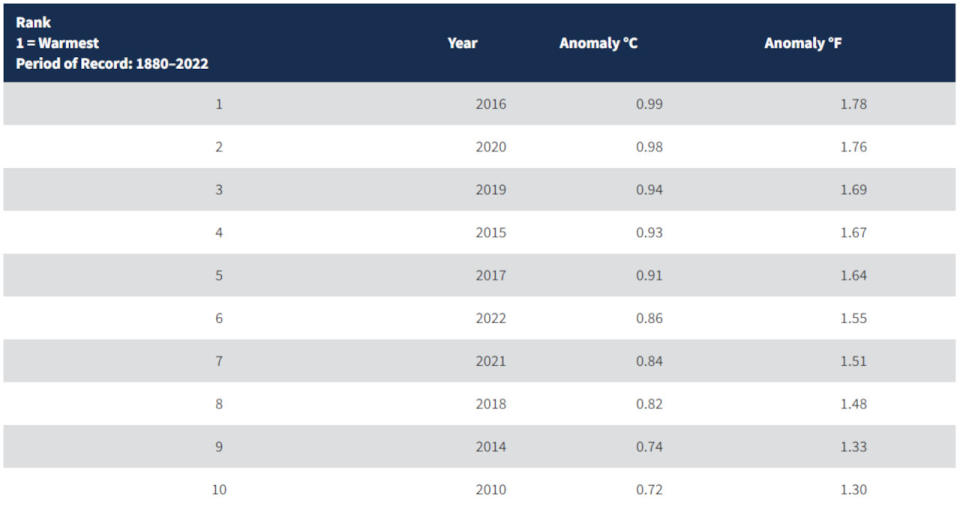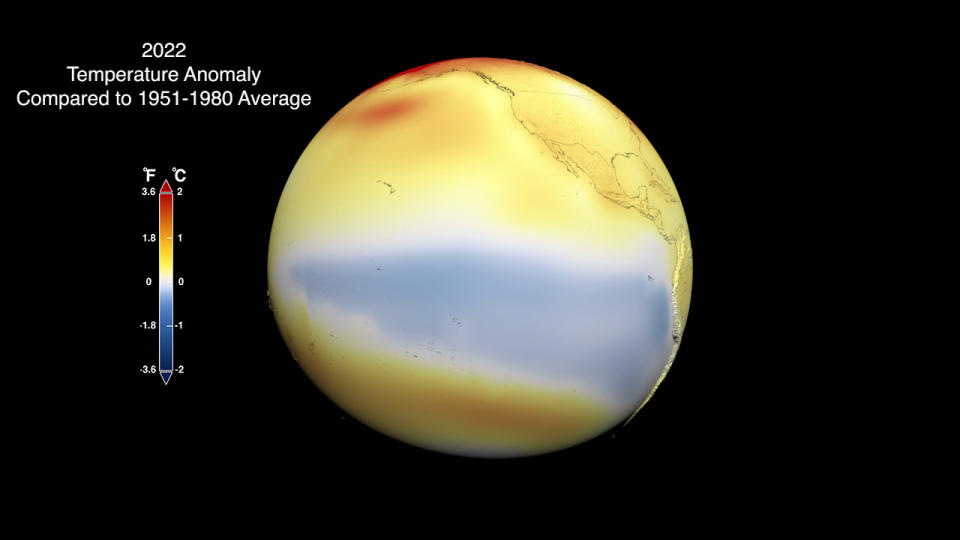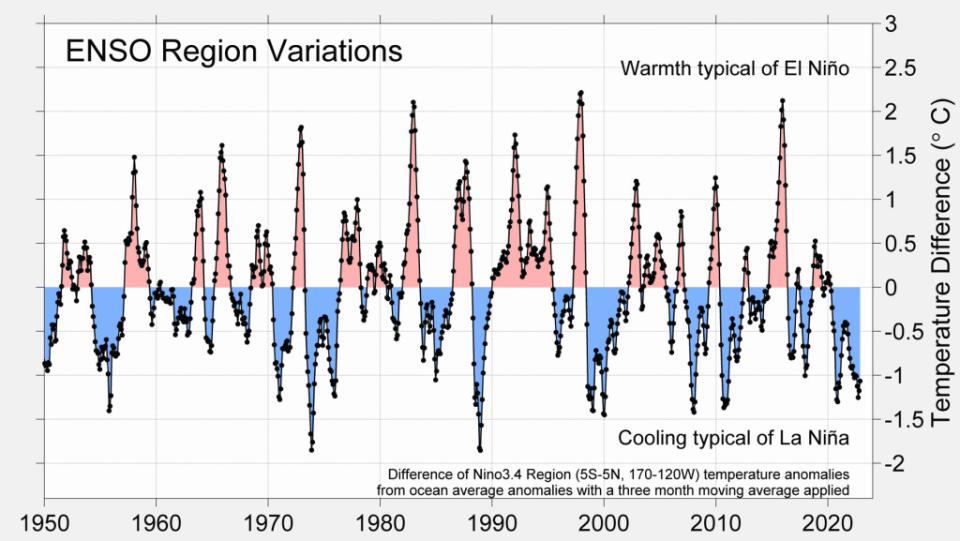We just had one of the hottest years on record; El Niño could make it worse
The globe just experienced its fifth or sixth warmest year since the 1800s, but without the cooling influence of La Niña, it may have challenged the hottest years on record.
No matter how you look at it, last year was one of the hottest the globe has experienced in over a century.

Global annual temperature anomalies from 1880 to 2022 are plotted in the graph above, as compared to the 30-year average from 1951-1980. 2022 comes in at 0.89°C above average, ranking it as the fifth warmest year in NASA’s records. (NASA GISS)
According to NASA, Europe’s Copernicus Climate Change Service, and the California-based research group Berkeley Earth, 2022 was the fifth warmest year since the 1800s.
Based on data from the National Oceanic and Atmospheric Administration (NOAA) and the Japanese Meteorological Agency, it was the sixth warmest year on record.

NOAA’s ranking of the top ten warmest years from 1880 to 2022. 2016 still retains the top spot in the records, at nearly a full degree Celsius above the 20th Century average, while 2022 comes in as the sixth warmest year at +0.86°C. (NOAA NCEI)
While each of these agencies entered a slightly different value into their records, and for some this meant the year ranked higher or lower than for the others, these differences only reinforce the overall conclusion that the world is warming. This is because even with each of them using a different method of computation, and each comparing their results with a different baseline average, they still all see the world warming by roughly the same amount and at roughly the same rate.
“The reason for the warming trend is that human activities continue to pump enormous amounts of greenhouse gases into the atmosphere, and the long-term planetary impacts will also continue,” said Gavin Schmidt, director of NASA’s Goddard Institute for Space Studies, which performs the agency’s climate modelling and assessments.
“This warming trend is alarming,” NASA Administrator Bill Nelson said in a press release on Thursday. “Our warming climate is already making a mark: Forest fires are intensifying; hurricanes are getting stronger; droughts are wreaking havoc and sea levels are rising. NASA is deepening our commitment to do our part in addressing climate change. Our Earth System Observatory will provide state-of-the-art data to support our climate modelling, analysis and predictions to help humanity confront our planet’s changing climate.”
Read more: The curious case of a 'triple-dip' La Niña in a warming world
Without La Niña?
La Niña is the cold phase of the El Niño Southern Oscillation (ENSO), a large-scale climate pattern of winds and sea surface temperatures that stretches across the equatorial Pacific Ocean.
Under normal conditions, winds blowing across the Pacific push warmer waters towards southeast Asia and Australia and cause cooler waters to well up along the northwest coast of South America. During an El Niño, these wind patterns change, allowing the warm water to slosh back towards the east, and this results in a slight warming for the entire globe. During a La Niña, the east-west winds blow stronger, pushing the warm waters even farther west and expanding the region of cooler waters along with it, causing a slight cooling for the planet.

Cooler waters stretch across the equatorial Pacific Ocean during La Niña in 2022. (NASA GSFC)
According to Berkeley Earth, during an El Niño or La Niña, for each 1°C increase or decrease in sea surface temperatures in the central equatorial Pacific (the Nino3.4 region), respectively, they expect a corresponding 0.1°C increase or decrease in global temperatures.
“In other words, we expect the effect of La Niña in 2022 was roughly to make the annual average ~0.1°C colder than it might otherwise have been,” they said.
Based on Berkeley Earth’s data, shown in the graph below, La Niña lowered the surface temperature of the central equatorial Pacific by about 1.25°C.

Temperature variations in the Nino3.4 region due to El Niño and La Niña from 1950 to 2022. (Berkeley Earth)
Thus, without La Niña, the global average temperature for 2022 would have been about 0.13°C higher, overall. That would make NASA’s average for the year +1.02°C, instead of +0.89°C. NOAA’s average, currently at +0.86°C, would have instead been +0.99°C.
In both cases, having normal conditions across the Pacific during the past year would have resulted in 2022 being tied — with 2020 for NASA and 2016 for NOAA — as the warmest year on record!
“When the variability in the Pacific inevitably shifts back towards an El Niño — as appears likely in mid-to-late 2023 — the additional 0.1-0.2°C (0.2-0.4°F) of warmth expected to be released by El Niño will greatly increase the odds that the following year will be a new record for global average temperature (i.e. a possible 2024 record, if El Niño does return in mid/late 2023),” Berkeley Earth stated.

